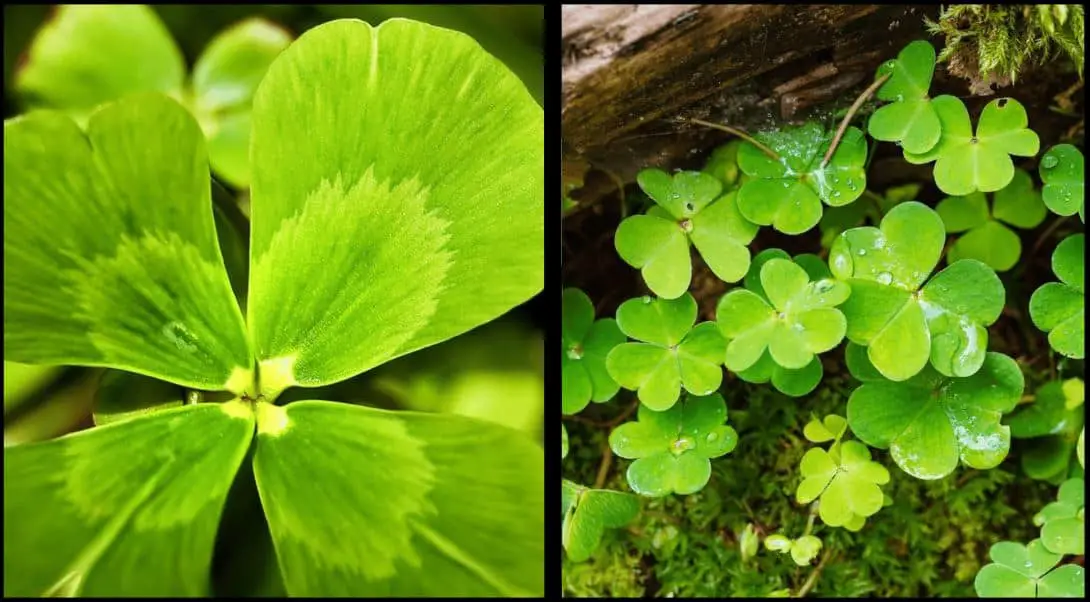The Shamrock and the clover have also been referred to as good plants. Shamrock plants are often offered for sale in Ireland to honor St. Patrick’s Day. So what distinguishes a shamrock from a clover? The Shamrock and the clover are symbols of luck, but is a shamrock a clover? Let us examine their genus names to clear up any confusion about these two plants.

Four Leaf Clover vs. the Shamrock
The Gaelic term “seamrog,” which means little clover, is where the name “shamrock” originates. In fact, according to Irish tradition, the plant is unique to the Emerald Isle and cannot be produced anywhere else. What, however, exactly is a shamrock? Some think it is a 4-leaf clover, the epitome of good fortune. Some believe it to be only a different kind of clover. These statements are false, and history books may expose the plant’s genuine nature.
Shamrocks are often connected to St. Patrick’s Day and symbolize the rebirth of spring. While they may now be seen with four leaves, historically, they were represented by three-leafed plants. Christianity uses three leaves to symbolize the Holy Trinity, each for the Father, Son, and Holy Spirit. The fourth leaf of the modern four-leaved shamrock is God’s Grace.
Several varieties of wood sorrel are often considered the “real” shamrock. Shamrocks are often marketed with plants like Oxalis deppei, sometimes known as the Good Luck plant. While there are a few native Oxalis species in North America, most are marketed as houseplants since they are not winter-hardy. These might be green or purple and have big trifoliate leaves. After the growing season, they start to develop blooms before going into dormancy.
Shamrock vs. Clover: What the Difference
Botanists have argued about which shamrock is the “real” for generations. Most people in modern Ireland adorn themselves with a plant belonging to the white clover family when it comes to shamrocks. As shamrock home plants, Trifolium plants are sometimes offered for sale, although Oxalis species are more often bought. Instead of selling the natural types of plants, modern commerce has transformed this into a marketing trick.
Shamrock and clover are synonymous in terms of culture. Clover, however, belongs to the Trifolium genus, sometimes known as a trefoil. The herb Medicago lupulina, often known as black medick, which has leaves like those of Trifolium and shamrocks, was frequently employed instead of oxalis.
Oxalis shamrock cultivation
Cultural demands may provide insight into the debate between clover and shamrock. Turfgrass and many other outdoor environments are ideal for growing clover. The big-leafed Oxalis species must often be grown inside since they are not native plants. Knowing that Oxalis leaves are heart-shaped rather than circular can help you recognize the difference. Clover leaves are round.
Clover grows well in shady, poorly draining areas. It creates thick roots. Since oxalis grows from small bulbs, it needs indirect lighting. They like cool nights, warm days, and soil that drains well. Oxalis does not need regular re-potting and seems to like being confined to its pot. The distinctions between shamrocks and clover may be brought out by their little variations in cultural requirements and leaf forms.

